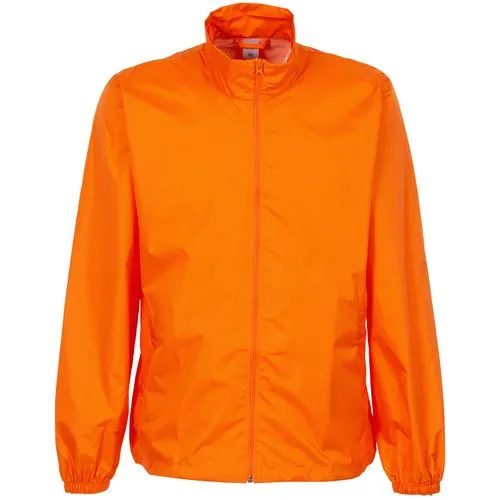 rainwears@163.com may@may-rain.com
rainwears@163.com may@may-rain.com Mon to Friday: 8.00 am - 7.00 pm
Mon to Friday: 8.00 am - 7.00 pm
The Evolution and Utility of Function Wears in Modern Life
Function wear has become an essential part of contemporary apparel, offering specialized features that cater to various practical needs. These garments are designed to provide protection, comfort, and durability in different environments, making them indispensable for both everyday use and professional applications. Unlike traditional clothing, functional wear prioritizes performance, ensuring that wearers can engage in activities without being hindered by environmental factors or occupational hazards. Among the most common types of functional wear are rain-resistant outerwear and work aprons, which serve distinct purposes in daily life. The increasing demand for such apparel reflects a growing awareness of the need for clothing that adapts to modern lifestyles.
The Role of Function Wear in Outdoor Protection
Outdoor activities often require clothing that can withstand harsh weather conditions while maintaining comfort and mobility. A rain-resistant windbreaker is a prime example of functional wear designed for such purposes. This type of garment is constructed with tightly woven synthetic fabrics that repel water while allowing air circulation, preventing the wearer from overheating during physical exertion. The design often includes adjustable cuffs and hemlines to seal out wind and rain effectively. Similarly, a raincoat windbreaker combines the protective qualities of a traditional raincoat with the lightweight, flexible design of a windbreaker, making it suitable for variable weather conditions.
For more extreme weather, a raincoat windbreaker offers enhanced features such as fully taped seams, storm flaps over zippers, and extended hood coverage to ensure maximum protection against heavy rainfall. These garments are typically made from advanced materials like polyester rain jacket waterproof blends, which provide long-lasting durability and resistance to moisture absorption. The use of raincoat polyester ensures that the garment remains lightweight and quick-drying, making it ideal for outdoor enthusiasts and professionals who require reliable performance in wet conditions.
Function Wears in Professional and Creative Settings
The application of function wear extends far beyond casual outdoor use, playing an indispensable role in numerous professional and creative fields. These specialized garments are engineered to meet the unique demands of various work environments, where standard clothing would prove inadequate. In sectors ranging from culinary arts to industrial manufacturing, function wears provide essential protection while maintaining wearer comfort and mobility throughout extended work periods. The design philosophy behind these garments emphasizes practicality, with features tailored to specific occupational hazards and workflow requirements.
In culinary environments, functional wear such as chef's aprons and kitchen uniforms serves multiple critical purposes. Heavy-duty aprons constructed from oil-resistant fabrics protect against hot splatters and food stains, while moisture-wicking materials help regulate body temperature in high-heat kitchen conditions. The integration of tool pockets and reinforced stitching enhances functionality, allowing culinary professionals to work efficiently without compromising safety. Similarly, in healthcare settings, medical-grade function wear incorporates antimicrobial fabrics and fluid-resistant barriers to maintain sterile conditions and prevent cross-contamination.
The creative industries rely extensively on specialized function wear designed to facilitate artistic processes while protecting clothing from damage. Artists working with paints, dyes, or ceramics often utilize aprons featuring the apron drawing with color concept - garments that combine practical protection with aesthetic considerations. These aprons typically feature large coverage areas, deep pockets for brushes and tools, and easy-to-clean surfaces that resist pigment absorption. For drafters and designers, the apron line drawing style offers a more streamlined alternative, focusing on minimalist designs that allow unrestricted movement during precision work while still providing basic protection against graphite smudges and ink stains.
Industrial and technical fields demand some of the most robust function wear available, with garments engineered to withstand extreme working conditions. Welding aprons made from flame-retardant materials, construction-site jackets with high-visibility panels, and laboratory coats resistant to chemical spills all demonstrate the specialized nature of occupational function wear. These garments frequently incorporate additional safety features such as reinforced knees in work pants, tear-resistant fabrics in utility jackets, and strategically placed ventilation in high-heat environments. The evolution of these professional function wear continues to parallel advancements in material science, with new developments in smart textiles and wearable technology further enhancing their protective capabilities and functionality.
Technological Advancements in Function Wears
The development of function wears has been significantly influenced by advancements in textile technology and material science. Modern polyester rain jacket waterproof designs incorporate specialized coatings such as polyurethane laminates or hydrophobic treatments that enhance water resistance without compromising breathability. These innovations allow the fabric to repel water while permitting moisture vapor to escape, ensuring comfort during prolonged wear.
Additionally, improvements in fabric weaving techniques have led to the creation of more durable and lightweight materials for raincoat windbreaker styles. Reinforced stitching, abrasion-resistant panels, and modular designs contribute to the longevity of these garments, making them suitable for rigorous outdoor activities. Ergonomics also plays a crucial role, with features like articulated sleeves, adjustable waistbands, and strategic ventilation enhancing wearer comfort and mobility.
In conclusion, functions wear serve a critical role in various aspects of daily life, from outdoor adventures to professional work environments. Their design and material innovations continue to evolve, offering enhanced functionality, durability, and comfort for users worldwide. As consumer demand grows for apparel that combines practicality with performance, the future of functional wear will likely see further integration of smart textiles, sustainable materials, and adaptive designs. Whether for protection against the elements or occupational hazards, these garments remain an essential component of modern wardrobes, reflecting the dynamic intersection of fashion and functionality.

-
The Ultimate High Visibility Rain Jacket With Hood
NewsNov.19,2025
-
Staying Dry With a High-Vis Bicycle Raincoat
NewsNov.19,2025
-
Caring for and Washing Your Lined Rain Jacket
NewsNov.19,2025
-
Breathable Men Raincoat with Hood for Hiking
NewsNov.19,2025
-
Custom Women’s Waterproof Raincoat – Hooded Outdoor 1-Piece
NewsNov.17,2025
-
Long Men’s reflective rainwear raincoat - Waterproof Hi-Vis
NewsNov.17,2025































